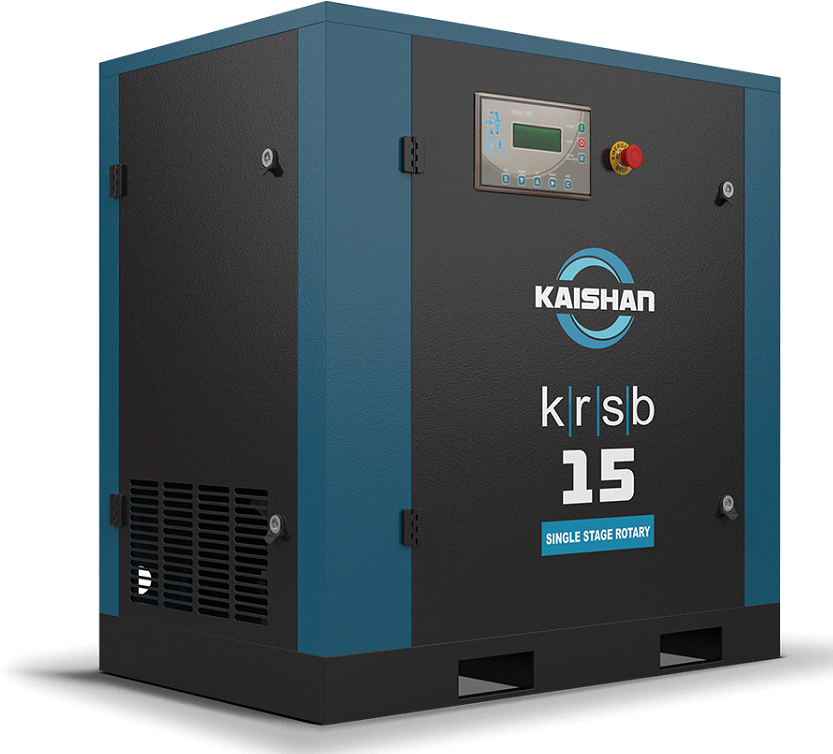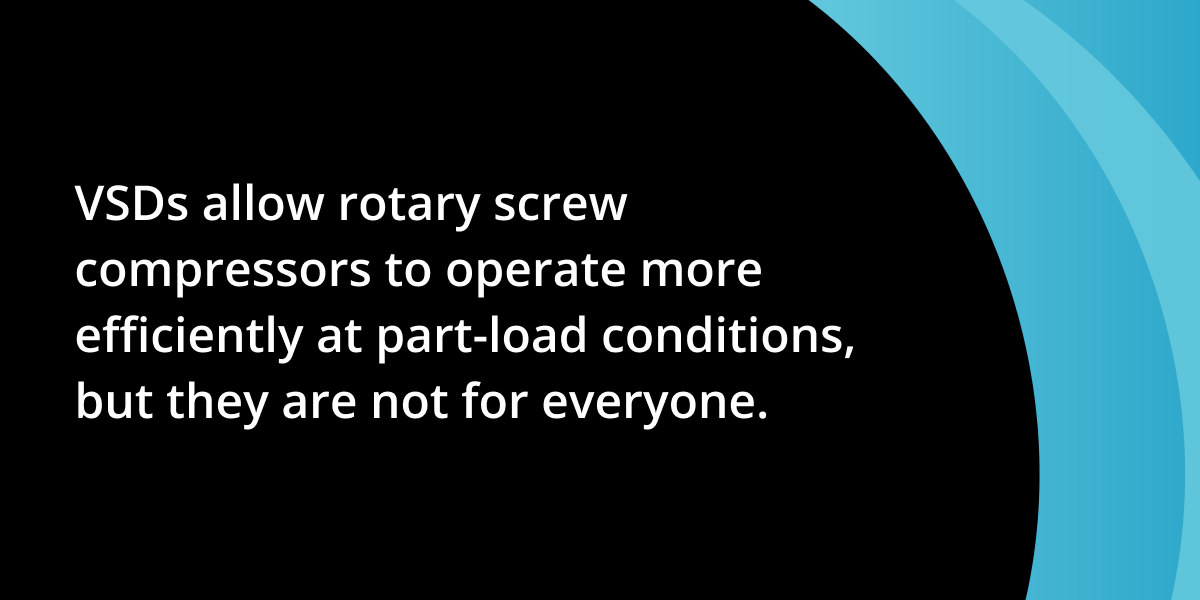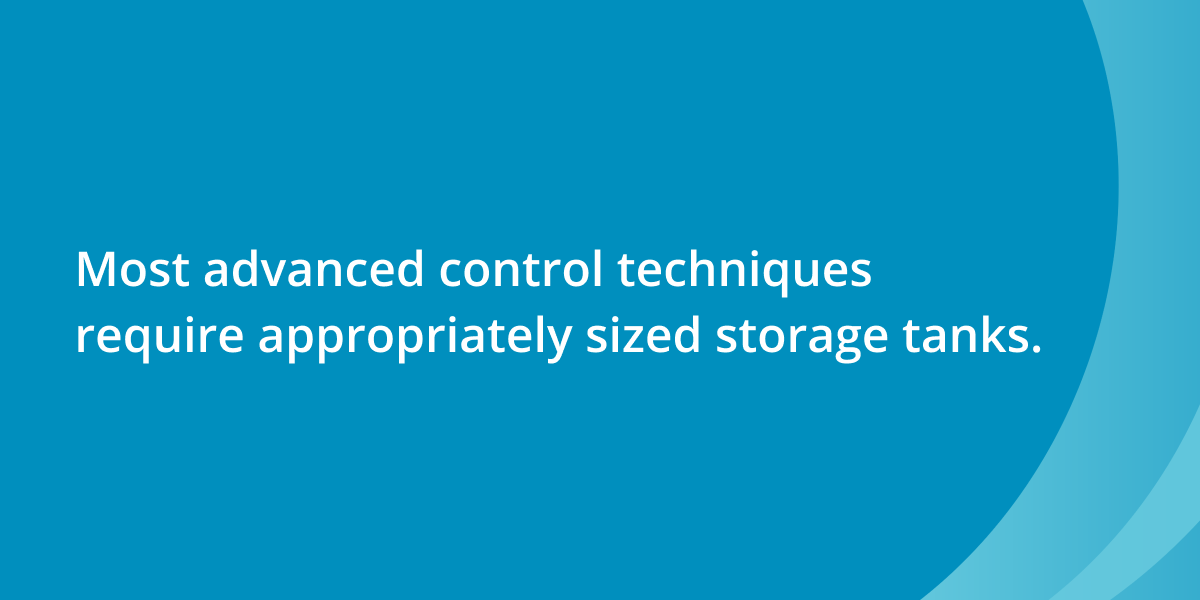
The Differences Between Air Compressor Preventive Maintenance and Predictive Maintenance. And Why You Should Care.
September 18, 2024
Air Compressor Installation Checklist—18 Things To Check Before, During and After Your Installation.
October 2, 2024Everything You Need to Know About Compressed Air Controls
Kaishan USA | September 25, 2024| Uncategorized

Having the right controls is a critical part of optimizing the operation of your compressed air system.
It may seem odd for an air compressor manufacturer to create a blog post about controls, a product we don’t make.
However, compressed air controls play a pivotal part in successfully running your air compressor. Over the years, we’ve seen that a well-planned controls approach can be critical to optimizing the operation of your compressed air system.
Even more importantly, we have experience working with different compressed air controls systems in real-world situations. That gives us a unique perspective that we think most of our customers value.
We would like to share those insights with you. Let’s start with the basics.
Control Basics
The basic compressed air controls are start/stop and load/no load.
Start/stop is used both in reciprocating and rotary screw compressors, generally less than 30 horsepower in size. It’s like a car—you get in, you turn the key and then when you reach 70 miles an hour, you turn it off. Then when the car slows down to 60, you restart the car and speed it up to 70 miles per hour, where you turn the car off again. That’s it.
A slightly more advanced control is load/no load, sometimes called load/unload or online/offline. You see this approach on some of the bigger recips and on all rotary screws. You turn the machine on, it goes to full load, then goes into neutral when it can hold at that pressure.
So when you put your foot on the accelerator and hit 70 miles an hour, instead of turning the car off, you take your foot completely off the accelerator and coast. Then, when it slows down to, let's say, 60 miles per hour, we kick it back in gear. So, you cycle between 60 and 70. You're not turning the car off and wearing out your starter. That's the most common rotary screw control, and it's extremely energy efficient if it's applied properly.
We often recommend load/load controls on our KRSB belt-drive rotary screw compressors. You can also do load/no load on our KRSP and KRSP2 premium rotary screw air compressors.

We often recommend load/load controls on our KRSB belt-drive rotary screw compressors.
The Curse of Rapid Cycling
Rapid cycling occurs when your compressor turns on and off constantly. It usually happens when your air compressor switches back into the loaded state before the transition to the no-load state is complete.
Rapid cycling requires frequent maintenance and potentially causes overheating and carry-over of moisture and oil. Ultimately, it increases energy consumption and wear and tear on the motor, valves, bearings and other internal parts, reducing the compressor’s lifespan. It’s not out of the question to see a compressor with a ten-year expected life cycle fail after just six months of rapid cycling!

There are several reasons why your compressor may get locked into rapid cycling. Your pressure band could be too tight, or your system might need more storage. It could even arise from a combination of all those factors.
The leading cause, though, is oversizing. It may seem counterintuitive, but with rotary screw air compressors, “too much” is almost as bad as “not enough.” So, it’s essential that you don’t oversize your system.
Here’s why. Rotary screw air compressors are designed for a 100% duty cycle. Run them significantly less than that, and you’ll waste electricity.
Overbuying is even a concern when you’re simply replacing one 150-HP compressor with another. The reason? New equipment is typically more energy-efficient than older equipment. So, you need to focus on CFM requirements and not replace HP for HP.
For more on oversizing your compressor and the dangers of rapid cycling, read our white paper, “Demystifying Air Compressor Sizing.”
Modulation
To combat rapid cycling, we often propose modulation, adjusting the inlet valve in proportion to the demand on the system. Opening the valve allows the maximum amount of air into the compressor, and closing it reduces the amount of air entering the inlet.
That’s good for longevity, but not helpful for efficiency. Modulation has traditionally been viewed as a waste of money and energy, not unlike having your foot on the accelerator and the brake at the same time. However, the loss is insignificant compared to the negatives of rapid cycling.
Kaishan incorporates modulation into some of our models, including our KRSD direct-drive and some of our KRSP rotary screw air compressors. We are one of the few compressor manufacturers incorporating modulation into our units, though others do offer field retrofit kits.

We incorporate modulation into some of our models, including our KRSD direct-drive rotary screw air compressors.
Another way to combat rapid cycling is the use of variable-speed drive compressors.
Variable-Speed Drive Compressors
A VSD air compressor is equipped with a variable-frequency drive or inverter, allowing it to adjust its motor speed or RPM (and thus its CFM) to match the real-time demand for compressed air. When the demand drops, the inverter reduces the motor operation to a lower speed (and lower CFM). It thus consumes proportionately less energy (and money), creating a relatively linear output-to-input efficiency curve.
VSDs allow rotary screw compressors to operate more efficiently at part-load conditions. They are almost tailor-made for rotary screw air compressors, which can easily change speeds.
VSDs are recommended when the compressor operates at a load between 30% and 80% of its total capacity most of the time. They are very valuable as a trim compressor complementing a base load compressor (For more information on a three-compressor configuration, read our blog post, “How Energy-Efficient Air Compressors Can Reduce Your Carbon Footprint.”
In another automotive analogy, using a VSD compressor is like cruise control in your car, putting your foot on the gas and taking it off. By doing that, it speeds up and turns down the motor, which is a very efficient way of meeting demand and doing it efficiently.

Not for Everyone
However, a VSD air compressor will not benefit every company. We do not recommend using VSDs when your compressor runs at 100% load most of the time since the drive itself incurs some losses. We also encourage customers not to use a VSD compressor when the machine runs at or below 50% of its total capacity most of the time. It will run too cold and build up moisture, ruining the machine and causing excess oil carry-over.
In addition, VSDs are not a good solution when there’s a lot of heat, which is quite likely in the control rooms where compressors are usually located. They also require cleaner and cooler environments than a fixed-speed rotary screw.
The bottom line? Variable-speed drives are a more energy-efficient way to address rapid cycling. But they can cost you money if not applied appropriately. How? A VSD air compressor has a higher initial cost than a fixed-speed compressor. Plus, frequent breakdowns all too often occur when a VSD compressor is not the right choice for the application.
As a result, we’ve become strong advocates for applying VSD technology everywhere that’s appropriate. And more importantly, we’re totally against misapplying VSDs.
For a complete discussion on how and when to apply VSDs, read our blog post, “How Variable-Speed Drive (VSD) Rotary Screw Air Compressors Save You Money.”
Another option for controlling your entire compressed air system is network control.
Networking Multiple Compressors
In network control, compressors are networked to form a chain of communication that automatically cycles through stop/start, load/no load, modulate, and variable speed. One compressor is the lead unit, issuing instructions to the others in the system. The goal is to link all the compressors together and keep a consistently low pressure throughout the system. Usually, you can only network compressors from the same manufacturer without an aftermarket controller.
Using a 1,000 CFM example, let’s say we have a 400 CFM base load machine and a 600 CFM variable compressor. We could network those two together so that we could effectively be trimming at an energy-saving point anywhere along that graph from 300 to 1,000 CFM. So, we're compressing the air efficiently.
Many compressed air users have turned to System Master Controls to network air compressors (even from different manufacturers) throughout their plants in a preprogrammed sequence.
Properly configured, these advanced controls can allow you to operate your compressed air supply in a relatively tight band, such as +/-2 PSIG. And that’s great news both in operating costs and energy use.
But all too many plant people have come to think of these advanced controls as a “fix it and forget it” recipe for their compressed air system. Unfortunately, not so much.
It’s easy to construct a scenario in which that strategy comes undone. Suppose you had an unanticipated failure in one of your lead compressors, just when you were at the bottom threshold of your supply band. That could easily result in a rapid drop in your supply pressure.
And during the time it takes for a standby compressor to come online, run through its protocols, and begin to contribute air, the supply pressure could continue its rapid decline.
Because the event occurs when pressure is at the bottom of the band, critical processes begin to approach automated shutdown mode. The lost production that results could be very costly.
The use of a Pressure-Flow Control system could prevent that, connecting the supply side of the system with the demand side and maintaining the energy balance at an optimum level.
Pressure-Flow Control
In the scenario mentioned above, a pressure-flow control system would release supplemental air from an air receiver tank to sustain production. There would be no pressure dip and your production people might not even be aware that a problem had occurred.
Pressure-flow control monitors the pressure at the control valve, releasing air from the air receiver tanks as needed to keep the system stable. So, while system master controls constantly readjust discharge pressure at the compressor, pressure-flow control monitors air pressure throughout the system. Users can maintain air pressure throughout their plant at the lowest optimum level, reducing discharge pressure on their compressors, and cutting energy usage and cost.
Pressure-flow control thus buffers the compressors from the ups and downs of system demands. That allows system master control to deploy compressors in the most efficient sequence, with the combination of the two approaches in one example saving about 20%.
We recommend that most of our customers use some form of flow control. Flow control monitors the pressure at the control valve, releasing air from the air receiver tanks to maintain system stability. It thus buffers the compressors from the ups and downs of system demands.

Kaishan USA always recommends using flow control because it allows you to reduce discharge pressure on your compressors and cut energy usage and cost.
Flow control helps you maintain air pressure throughout your plant at the lowest optimum level, reducing artificial demand and increasing energy efficiency.
Controllers require minimal maintenance, such as changing the filter when it is clogged. Unfortunately, plant maintenance workers sometimes bypass the device rather than changing the filter. And the facility loses the energy savings the flow control was providing.
But to make flow control work, you need compressed air receiver tanks.

Most advanced control techniques require the deployment of compressed air receiver tanks.
Compressed Air Receiver Tanks
Most of the control techniques mentioned above require appropriately sized storage tanks. It’s a best practice to have both wet and dry storage to remove moisture and maintain stable header pressure for these fast events.

If you don't have enough storage, your compressor may begin rapid cycling, especially if there’s sudden demand—all your end users are calling for air at the same time. That’s why the Compressor Air and Gas Institute says you need eight to ten gallons of storage for each CFM of flow from the largest compressor.
Some companies think they don't need storage if they have a VSD compressor. But that’s not true. A compressor can't make up demand; You still need storage to create a buffer—three to five gallons of storage per CFM of the largest compressor.

Heavy users of compressed air, like shot-blasting, might benefit from a point-of-use storage tank, also called a balance tank.
For more information on storage and compressed air receiver tanks, read our blog post, “A Quick Guide To Accurately Size Air Compressor Tanks.”
Selecting the Right Controls for Your Operation
As important as it is to select the right air compressor, it’s almost as important to choose the right compressed air controls approach for your plant. And, unfortunately, no checklist or cookie-cutter approach will make that selection for you.
We strongly recommend working with your local compressed air professional to select the control system that best fits your workload, site conditions and maintenance skills. Fortunately, we work with a nationwide network of independent distributors, who can provide on-site help and consultation as needed. These factory-trained air compression experts can help you select the right compressed air controls platform and even offer valuable support and guidance after you’ve made your choice.
Key Takeaways
- Compressed air controls play a pivotal part in successfully running your air compressor.
- The basic compressed air controls are start/stop and load/no load.
- Rapid cycling causes significant problems for compressed air systems, requiring frequent maintenance and potentially causing overheating and carry-over of moisture and oil.
- To combat rapid cycling, we often propose modulation, adjusting the inlet valve in proportion to the demand on the system.
- Variable-speed drive air compressors allow rotary screw compressors to operate more efficiently at part-load conditions, but they are not for everyone.
- Flow control helps you maintain air pressure throughout your plant at the lowest optimum level, reducing artificial demand and increasing energy efficiency.
- Most of the control techniques require appropriately sized storage tanks.
Let Us Help
Controls play a pivotal part in successfully running your compressed air system. A well-planned compressed air controls approach is critical to optimizing the operation of your system and all the processes that rely on that system. If you need help selecting the right controls platform, get in touch with the experts at Kaishan. Contact us today.
Random stat or
customer quote
textXXtext
text

